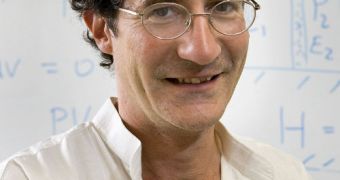A team of investigators in the United States managed to develop new scientific process, that brings the goal of being able to control chemical reactions mechanically closer than ever.
The accomplishment was achieved by Giovanni Zocchi, who is a physics professor at the University of California in Los Angeles (UCLA). The advancement his team made is extremely important for the field of nanotechnology. The new investigation was carried out on enzymes, which are a specific class of molecules that contribute to catalyzing chemical reactions, and increasing their probability of success.
Chemists say that during a reaction, molecules collide with one another, and exchange atoms. But the molecules need to be arranged in a certain way when they collide, otherwise they will change small numbers of atoms, or not at all.
What enzymes do is they ensure that the orientation is the proper one so that the maximum number of atoms is exchanged between two or more molecules.
“Instead of just watching what the molecules do, we can mechanically prod them,” explains Zocchi, who is the the senior author of the new research.
Working together with graduate students Chiao-Yu Tseng and Andrew Wang, the expert was able to attach a DNA “spring” to a specific group of enzymes.
This molecular construct could be controlled from the outside, the team says, and so the researchers could turn the enzyme on or off according to needs.
Additionally, the group was also able to attach three springs at three entirely different spots on the surface of a target enzyme, which gave the scientists even finer control on the role the molecule played in the reaction.
Details of this accomplishment have already been published in July, in the European Physical Society's scientific journal Europhysics Letters.
“We have stressed the enzyme in different ways. We can measure the effect on the chemical reaction of stressing the molecule this way or that way,” the team leader explains.
“Stressing the molecule in different locations produces different responses. If you attach the molecular spring in one place, nothing much happens to the chemical reaction, but you attach it to a different place and you affect one step in the chemical reaction,” he adds.
“Then you attach it to a third place and affect another step in this chemical reaction,” he concludes.

 14 DAY TRIAL //
14 DAY TRIAL //